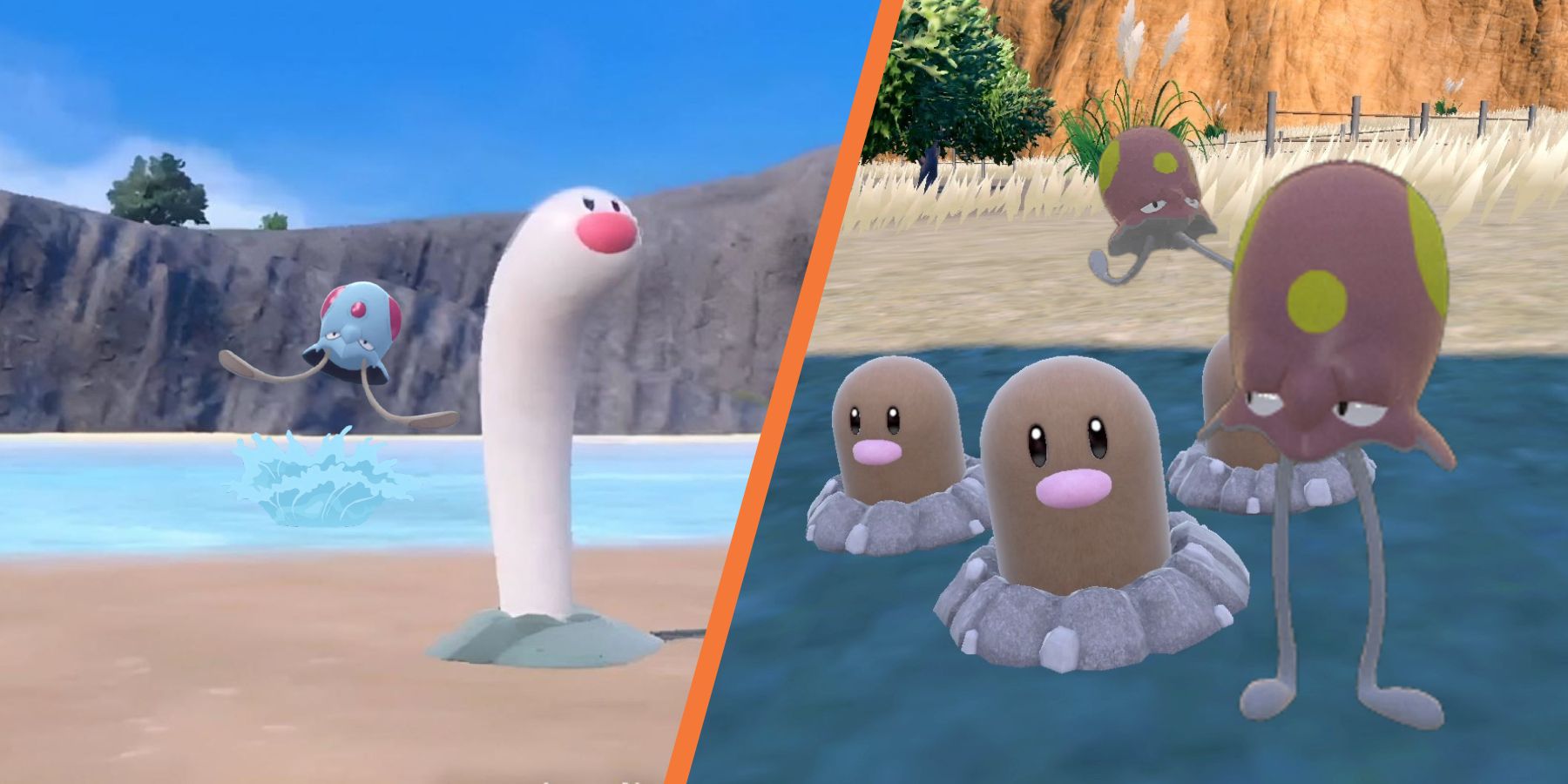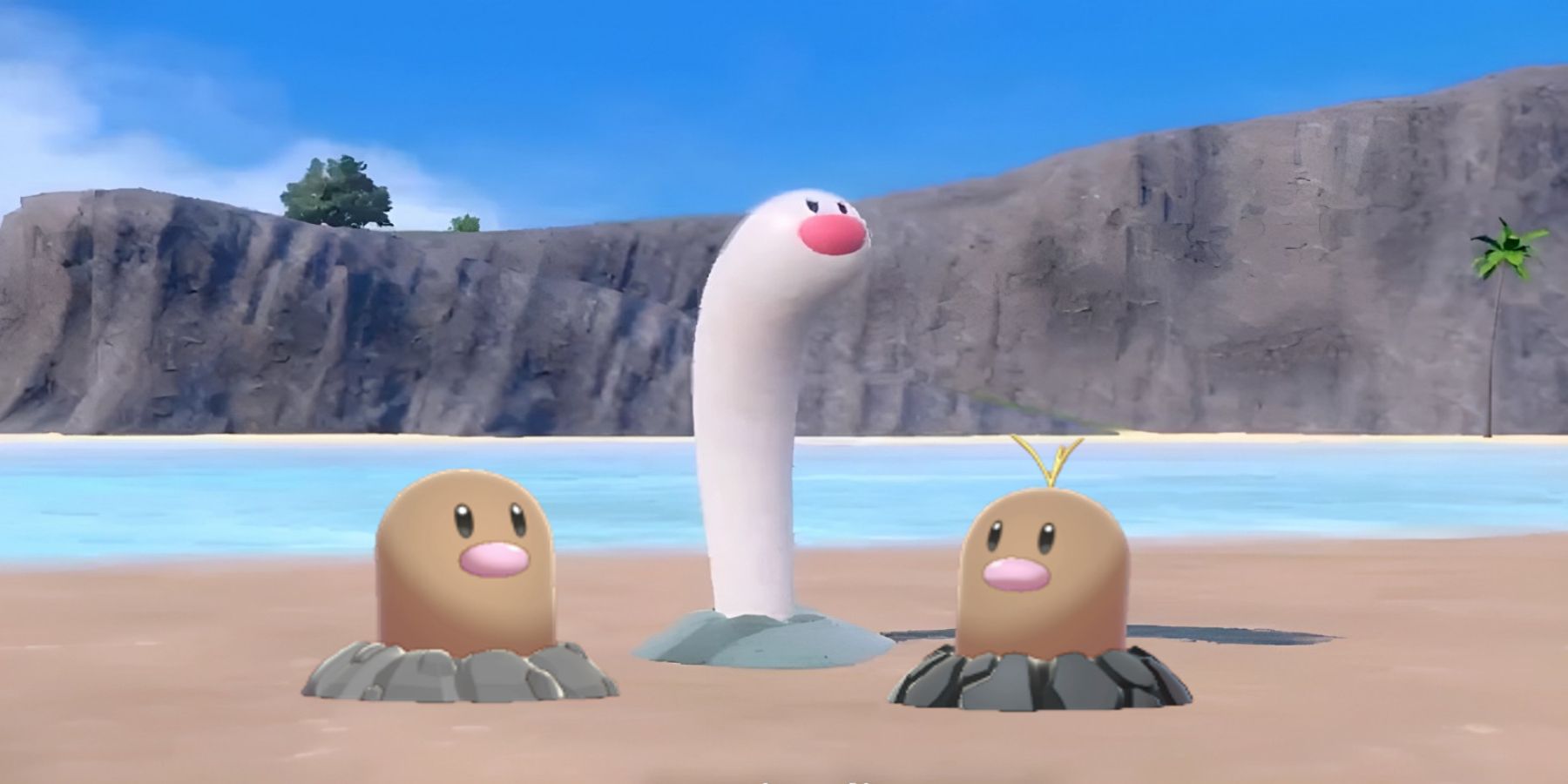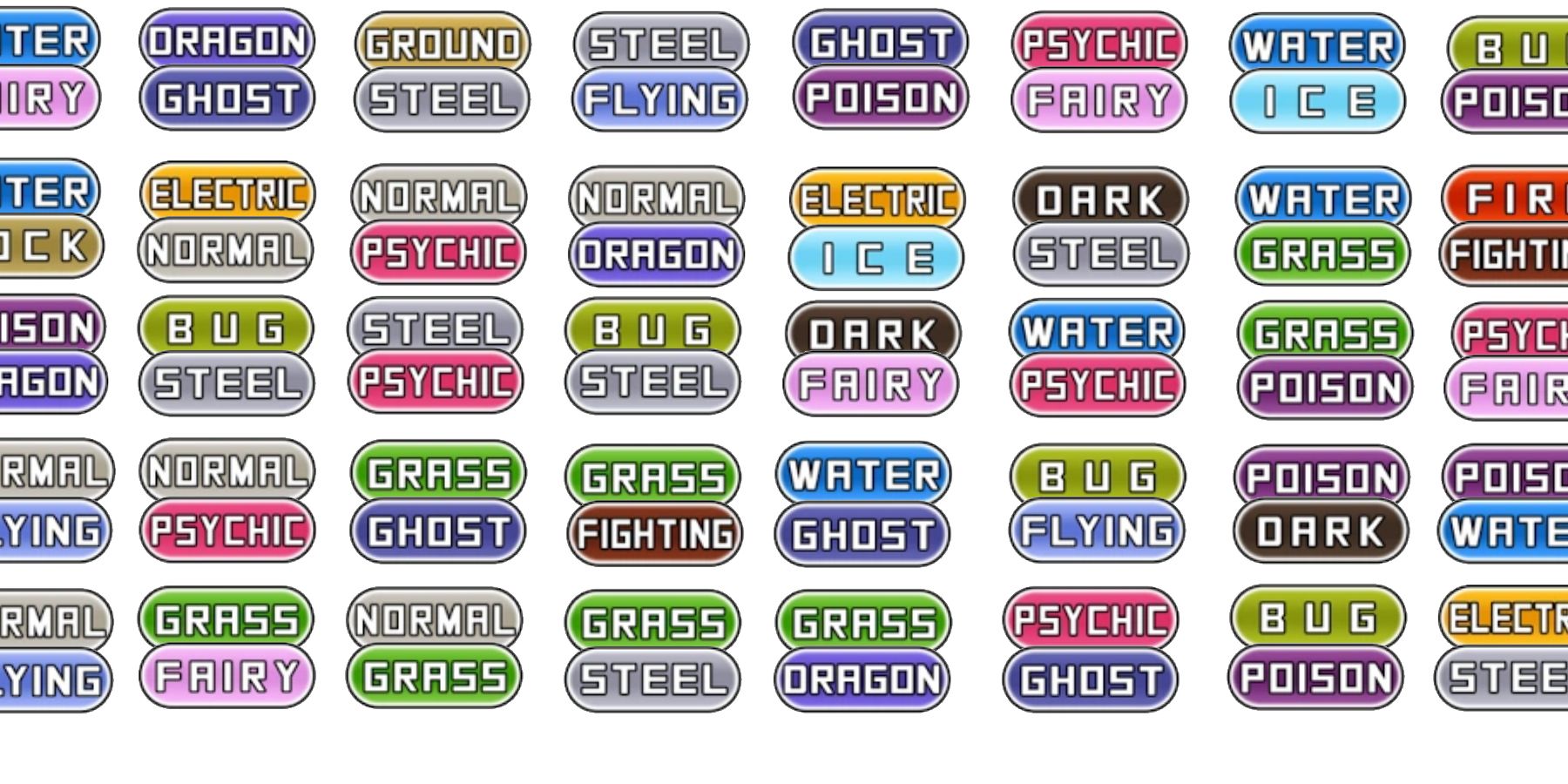Among the many new features and gimmicks introduced in Pokemon Scarlet and Violet, it seems the focus has been drawn away from regional forms and onto regional fakes, with new Pokemon that take after classic designs but by contrast are total opposites. Since their debut back in Sun and Moon, regional forms and evolutions have been a popular fixture of new upcoming generations with at least one or two new variants showcased via Pokemon's marketing. However, despite the rumors of a Paldean Diglett being based on leaks, the actual truth behind Wiglett changed the landscape of Pokemon forms yet again.
With Pokemon Scarlet and Violet officially launched and fans trawling through its Paldean Pokedex, these new regional fakes consisted of not just the Wiglett line but also a new Toedscool line, making it a tentative first step for Game Freak into a new gimmick that could be its next series staple. While reactions to these Pokemon have been mixed, it does open a door for future designs to explore previous concepts and reimagine them in new and interesting ways. By breaking down the similarities and differences between the originals and the copycats, fans can start to understand how future regional fakes might evolve.
Pokemon Scarlet and Violet: Comparing the Visual Designs of Regional Fakes
Of the two regional fake lines introduced in Scarlet and Violet, Wiglett is not only the first but it and its evolved form Wugtrio are arguably the best of the two that demonstrates the base inspiration from the Diglett line while providing its own unique spin. Though the two lines share common design elements such as a cylindrical body, button nose, and rounded head, there are significant differences too, such as different coloration and the transition from Diglett's dirt to Wiglett's sand and then Wugtrio's boulder. Though they look similar, the design has enough altered to it that confirms Wiglett and Wugtrio are new Pokemon, not just new forms.
Toedscool's line and its visual design, on the other hand, are a closer copy to the original Pokemon they are based upon. Both the Tentacool and Toesdcool lines share a similar appearance, each having the same general shape and form, right down to the "tentacles" and orbs on their heads. Their differences then seem to be superficial, with the easiest observation being a swapped blue color palette from Tentacool to Toesdcool's green. The only other outright difference is the transition from Tentacruel's pincer-like appendages to Toedscruel's "nozzle" mouth. Compared to Wiglett, Toesdcool's line is more directly inspired by Tentacool's.
The core of these regional fakes then seems to require that convergent species of Pokemon must appear as close to their original as possible in terms of visual design, even if certain design elements can't be easily paralleled. For example, Toedscool's line keeping its "legs" from its counterparts' tentacles is likelier due to it being based on the Gen 1 line and not because of any real-life fungal inspiration. Future regional fakes would therefore need to remain as similar to their original Pokemon in order to be actual examples, as other instances of convergent evolution like carcinization and Pokemon's abundance of crabs don't fall under regional fakes.
Pokemon Scarlet and Violet: Comparing the Naming Conventions of Regional Fakes
In the world of Pokemon, names can carry significance for characters, locations, and even Pokemon themselves. Oftentimes, some Pokemon names aren't overflowing with creativity, but there are occasions when these names have multiple different interpretations that give fans an insight into the Pokemon themselves. For example, Scarlet and Violet's own Lechonk has a deep background to its name, demonstrating that Game Freak, as with all its other Pokemon, is considering every element that goes into regional fakes.
Admittedly, fans acknowledge that Wiglett's name might be little more than an adaptation of "Diglett," suspecting the name derives from "wiggle" to refer to its gooey, eel-like aesthetic. However, in contrast, the Toedscool line showcases greater attention to detail, as in its Paldean Pokedex entry, it is classed as the Woodear Pokemon since it takes after the mushroom of the same name. Therefore, it's no surprise that the literal translation of the Japanese for wood ear mushrooms "kikurage" is "tree jellyfish," perfectly aligning with Tentacool's jellyfish-inspired line, and moreover, its English name based on "toadstool" neatly parallels the naming style of "tentacle."
Pokemon Scarlet and Violet: Comparing the Typing of Regional Fakes
While the regional fakes share designs to draw attention and their different names confirm they aren't regional variants, there's further evidence to suggest these Pokemon are complete opposites. In both cases with the regional fake lines that currently exist this is best reflected not just in their designs but also in their typing. Since Wiglett's and Diglett's lines are based upon distinctly different animals, specifically moles and garden eels respectively, the result is that while Diglett's line has remained a Ground-type even when given a regional form, Wiglett's line is a Water-type. This should have been an early indicator that Wiglett was not a regional form at all.
Again this is reflected in Tentacool's line and Toedscool's line, as the original Water/Poison type is a direct contrast to the Scarlet and Violet's Grass/Ground combo. Put into context alongside Wiglett's line and its type, fans have pointed out that the regional fakes have an outright type advantage against their originals. Some have argued that this was likely intentional as if it was Game Freak's way of explicitly demonstrating that these were never intended to be regional forms. After all, regional forms of current existing Pokemon adapt to changes in their environment and so often retain part of their original type, like Paldean Wooper's Ground type.
Future regional fakes then would likely see current designs being completely inverted to create an entirely new Pokemon. For example, if Game Freak was to create a convergent Electric-type Pokemon, then the ideas shown so far dictate that the resulting regional fake would be a Ground type as its only type weakness. Though the initial reaction to regional fakes believed they would set a bad precedent, it's becoming more apparent that there is greater nuance to these designs that must consider many factors, from visual concepts to the Pokemon's typing.
Pokemon Scarlet and Violet are available now for Nintendo Switch.



-(1).jpg)
